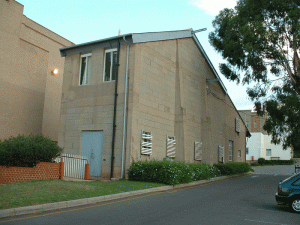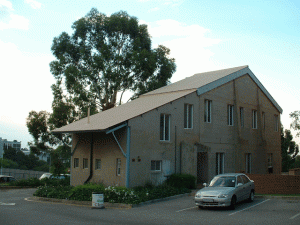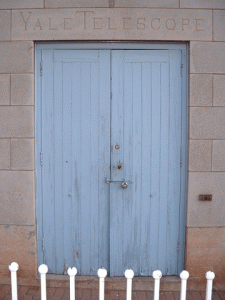Yale Observatory
1925 – 1951
-Later known as Yale – Columbia Southern Station.
-(Re-opened as Yale – Columbia Southern Station in El Leoncito, Argentina in 1963)
|
|
|
|
|
|
Current Information:
The Observatory has closed down. The Current Information section is not relevant to this Observatory.
.
Location: |
|
|
|
|
Noted for:
Did groundbreaking work in measuring the parallax and proper motions of stars in the Southern Hemisphere.
Summary:
- This Observatory specialised in stellar parallaxes.
- In 1925 Yale University started an Observatory in the grounds of the University of Witwatersrand, Johannesburg.
- In 1946 Columbia University joined forces with Yale and the Observatory became known as Yale – Columbia Southern Station.
- On 18 January 2003 a bush fire destroyed Mount Stromlo Observatory with all its instruments. The 26-inch refractor was also destroyed. (A section of the lost and found page is dedicated to this tragedy)
|
|
|
|
|
History:
- One of the pioneers in trigonometrical parallax work, was an American astronomer, Frank Schlesinger, who became Director of the Yale Observatory. He it was who initiated a major programme, ending in the production of what are known as the Yale Zone catalogues. He measured the parallaxes of many stars, together with their proper motions; but from his own country he could not reach the stars of the far south. What Schlesinger wanted to do was to set up a special observatory, to extend the parallax survey down to the south celestial pole. [Moore, p.111.]
- 1925: The American Yale University established the Observatory in the ground of the University of Witwatersrand, Johannesburg, close to the present Planetarium.
- The Observatory was created with the specific goal to establish distances to stars, using the trigonometrical parallax method. The instrument used, a 26-inch refractor, was a specialist telescope designed for the task. To measure a star’s parallax, it is essential for the star to be high in the sky when the relevant photographs are taken – so there was no need for the telescope to be wholly maneuverable, or to cover the whole sky. So long as it could be pointed some way to either side of the meridian, it would serve its purpose very adequately. Needless to say, a building of this sort was far cheaper than a dome.
- The first resident observer was H. Alden. (1925 – 1945)
- In 1946 Columbia University joined forces with Yale and the Observatory became a joint project.
- A new resident observer was appointed, C. Jackson, who was an astronomer at the Union Observatory.
- 1951: The project to measure parallaxes was completed. The Observatory served its function, and due to worsening air pollution the decision was taken to close down the Observatory. [Moore, p.111.] The telescope was dismantled and moved to Mount Stromlo in Australia. (Note:On 18 January 2003 a bushfire destroyed Mount Stromlo Observatory including the 26 inch telescope)
- In 1963 Yale University decided to re-open it’s Southern Observatory, in El Leoncito, Argentina.
|
|
|
|
|
|
|
|
|
|
|
|
|
|
|
- 26-inch (66 cm) photographic refractor.
|
|
|
|
|
Pictorial Sources:
Moore, P. & Collins, P., Astronomy in Southern Africa, p.112.
Bibliography:
- Smits, P., A Brief History of Astronomy in Southern Africa. (Unpublished)
- Stoy, R.H., Astronomy in South Africa, A History of Scientific Endeavour in South Africa, Royal Society of South Africa, 1977.
- Moore, P. & Collins, P., Astronomy in Southern Africa, pp.111 – 113. (General Source)
|
|
|
|
|
|
|
Gallery
 Yale Observatory building.
Yale Observatory building.
Photo Credit: Patrick Moore. Source: Moore

Yale Observatory Building as it looked in 2003.
Photo credit: Robert Groess

Photo credit: Robert Groess

Photo credit: Robert Groess

Photo credit: Robert Groess
 Yale Observatory building.
Yale Observatory building.



